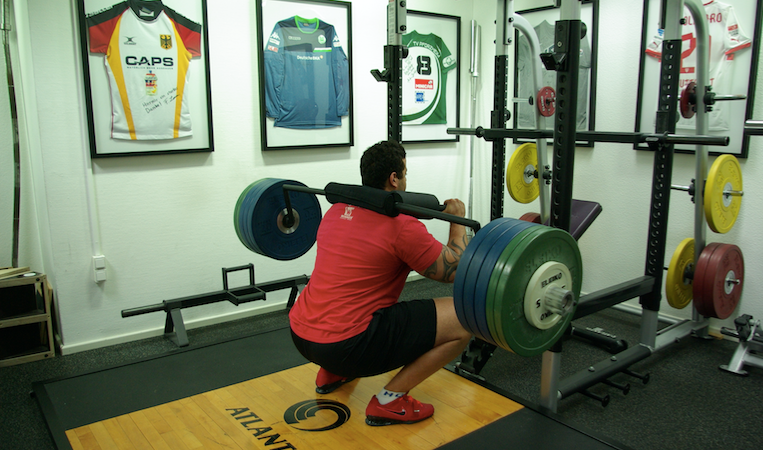At YPSI we have 21 different dumbbells. Each of these dumbbells has its role and benefits. This article focuses on the "Safety Squat Bar". A dumbbell that features front handles, neck/neck padding and a lowered disc mount. These three features of the "Safety Squat Bar" lead directly to the three main advantages and thus reasons why and when we use the "Safety Squat Bar" in training.
The 3 reasons that speak for the Safety Squat Bar are:
1. Ideal for Limited Shoulder Mobility - The front handles on the Safety Squat Bar allow squats to be performed at a time when shoulder mobility is acutely limited, such as from a shoulder injury following a competition, game or workout. Of course, the goal is always to restore optimal shoulder mobility as quickly as possible. Nevertheless, temporary restrictions are part of everyday training. To bridge this during squats - at a point where shoulder mobility is limited - the "Safety Squat Bar" is excellent with the handles that are attached in front of the upper body at chest height.
2. Lower center of mass - Lowering the disc holder, which primarily has the task of preventing the barbell from rolling, results in another advantage - a lower center of mass. Changing the distance between the primary pivot point (hip) and the center of mass (barbell) changes muscle recruitment within the range of motion. The lower center of mass shifts recruitment further down the range of motion, similar to a cambered bar, an excellent way to overload the area near the inflection point between eccentric and concentric contraction. Especially in the event that this area is the limiting one when performing squats.
3. More upright posture - Firstly, the centimeter-thick neck pad reduces the horizontal distance from the dumbbell to the fifth lumbar vertebra, and secondly, the elbows are far in front of the body due to the handles in front of the chest, both of which lead to a very upright posture when doing this squat. The upright posture when squatting with the "Safety Squat Bar" is almost identical to the front squat without involving the upper body as much as with the front squat. This more upright posture increases quadriceps recruitment, among other things.
A few years ago, a "Safety Squat Bar" in German gyms was unthinkable. There are now six studios in the Stuttgart area alone that provide a "Safety Squat Bar" for their members and trainees.
Good luck with integrating the "Safety Squat Bar" into your training!
There is more information about squats in Wolfgang Unsöld's third book "The perfect squat" - to order via Amazon click here
Image: Norwegian weightlifter Anour El Ouali squatting 198kg and the Safety Squat Bar at YPSI.

